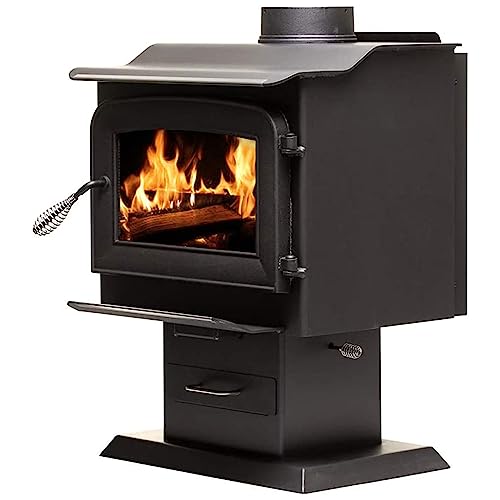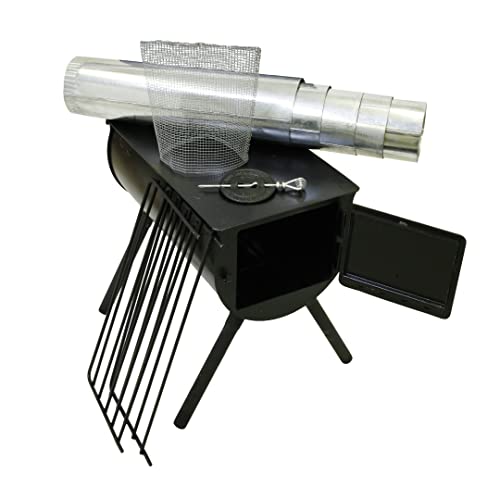It Is The History Of Woodburning Stove In 10 Milestones
페이지 정보

본문
 How to Properly Operate a Woodburning Stove
How to Properly Operate a Woodburning StoveWood stoves can provide an inexpensive and cozy way to heat the home. Smoke from wood stoves can be hazardous to your health. It is important to know how these appliances function and how to use them properly.
A lot of modern stoves rely on secondary or catalytic combustion to control their emissions. Older stoves and open flames emit high levels of particulates.
The firebox
The firebox is the heart of any fireplace system. It's where you create a fire to heat your home and provide ambiance. It's a simple concept, but there are many important details that must be accounted for to keep your wood burning stove safe and efficient.
The firebox can be described as a combustion chamber that has walls and lid. Most fireplaces have either a prefabricated metal or brick firebox. The type of firebox you choose will depend on your preferences as well as the type of fireplace you own.
The majority of wood-burning stoves employ an air flow that is constant to generate the flame and burn the fuel. Fresh air is drawn through the adjustable dampers inside the stove's doors. This allows the fuel to be properly burned and also helps reduce the toxic gases generated by unburnt or incomplete combustion. The exhaust gases will then be drawn up the chimney and away from your home.
Modern stoves with catalytic secondary combustion employ a special catalyst that reburns unburned gases to produce additional warmth. This results in a cleaner and less polluting emission than traditional wood stoves with no secondary combustion. Modern wood stoves that are not catalytic are available however they are generally less efficient than stoves with secondary combustion that is catalytic.
Some wood-burning fireplaces come with a backboiler, which can be used for space heating and water heating. These are referred to as "combination" or "hybrid" stoves and have been around since the early 20th century.
Wood burning stoves can only be operated with well-seasoned wood. Freshly cut wood (green) has a high water content. This could lead to low flue temperatures, and excessive creosote accumulation in the chimney. This can lead to chimney fires that damage the stove and could be harmful to your family's health.
If you're in search of a professional to inspect your wood burning stove or to make any repairs to your firebox, make sure the chimney expert you hire is CSIA certified and has reviews from their customers on their website. Find out their rates and the kind of work they can perform.
The pipe for ventilation
Ventilation is required for wood stoves to help remove smoke and keep the house healthy and warm. Ventilation is required to remove carbon monoxide and nitrogen dioxide from the combustion process. It also reduces the impact of air pollution and loss of heat to the outdoors. Wood, gas and pellet stoves have different venting requirements. Properly maintaining the stove's ventilation system on a regular basis is crucial to ensure safety and efficiency.
The ventilation system is made up of the firebox as well as the ventilation pipe. The chimney and the ventilation pipe work together to create draft, bringing smoke from the stove through the fireplace to outside air. The differences in densities and temperature between the hot wood smoke and the cold outside air creates draft. The higher the temperature, more smoke rises through the vent pipe and chimney.
Most modern wood stoves are EPA-certified as low-emission units. They produce less pollution than older models, which contribute to global warming and other environmental issues. The majority of modern stoves come with pollution control systems that reduce the amount of emissions, while ensuring that they are burned efficiently.
Older stoves with open flues emit much more carbon dioxide, an extremely poisonous gas and should not be allowed to escape into the home. This can happen if your chimney is not clean or if there is not enough ventilation. It is essential to install carbon monoxide detectors within your home.
Before installing a brand new or used wood stove take note of the distance from the place where the stove is placed on the floor to the chimney opening on the ceiling or wall. Multiplying this distance by 2 will give you the shortest length of stovepipe you will require. You can use a single-wall or double-wall stovepipes however, you must ensure the proper clearance from burning combustibles.
The stove's air vent must be adjusted when it first gets lit, until a good flame has been established within the stove and its combustion process has stabilized. It is advised to stay clear of using wood logs in the stove as they may contain volatile chemicals that could cause the air vents to fail.
The chimney
The chimney might not be something that homeowners give a lot of thought to, but it's an intricate system that requires careful attention. From top to bottom the chimney is comprised of several important components each of which is crucial to ensure that your stove operates safely and efficiently.
The wood-burning stove's combustion gases are emitted to the outside by the firebox, the vent pipe and the chimney. This is essential to reduce carbon dioxide levels as well as prevent harmful emissions. To achieve this, the chimney and flue need to be sufficiently hot to carry the gasses out of the fireplace without them cooling. This is accomplished by using a woodburning stove that has a high heat output and by regularly adding new logs to the fire.
Modern wood-burning stoves have a higher chimney than older systems to improve the drafting effect. This can be a problem if your chimney height exceeds the maximum for your location. If this occurs the chimney could be competing with the house stack for draft, causing gases to cool before exiting. This can impede the flow of gases and create a buildup of creosote that could be a fire hazard.
One of the most frequent errors that homeowners make is to close and open the fireplace door too often, which can negatively impact combustion. It is crucial to keep the fireplace door as shut as you can and only open it when you need to add ash or firewood. The door should not be left open for too long. This allows the hot air from the stove to escape, making the wood cooler and harder to light.
Other types of combustibles can cause higher emissions or even the possibility of a chimney fire. Woodburning stoves were designed and optimized to burn wood for fire. They are not suitable for other combustion products.
The flu
To ensure that the airflow is proper, woodburning stoves require an exhaust pipe that is the right size. The flue should be at a minimum 25 percent larger than the pipe connecting the stove and chimney to allow sufficient smoke passage. In addition the wood stove should be placed on a Ashley Hearth 2500 Sq. Ft. Wood Stove - Buy Now! Hearth 3200 Sq. Ft. Wood Stove - Buy Now! (view www.fireplacesandstove.com) constructed of non-combustible materials and is clear and unobstructed area that is in the front of the opening for the fireplace.
Modern stoves have the feature of catalytic combustor, which can cut down on the amount of harmful by-products that are released into the chimney. This feature can increase the efficiency of wood stoves by burning a flame which generates more heat while emitting less pollution. Making use of other types of combustibles than firewood, however, can cause problems with lower efficiency and more emission levels.
It is essential to use dry or seasoned wood when you are burning wood in your fireplace or stove. If your wood is not dry or seasoned it will release high levels of creosote and water vapor into the chimney. This could lead to low flue temperatures and possibly a chimney fire.
Another way to prevent a chimney fire is to have a professional inspect and clean your flue system on a regular basis. This should include the stovepipe, chimney and the chimney itself, to ensure that they are all in good condition.
A dirty stove or system can cause a poor draft in your chimney, which could cause carbon monoxide to accumulate in your home. This can be dangerous to your family members and you should never allow it to occur.
A good rule of thumb is to hire a professional chimney sweep sweep your stove and chimney once per year. This will keep your chimney and stove in good order.

- 이전글20 Up-And-Comers To Follow In The Private Adult Adhd Assessment Industry 24.09.21
- 다음글You'll Never Guess This Masturbators's Secrets 24.09.21
댓글목록
등록된 댓글이 없습니다.